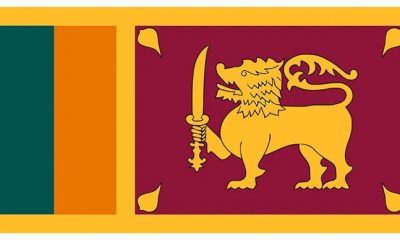Opinion
True history of 75 years of Independence – II
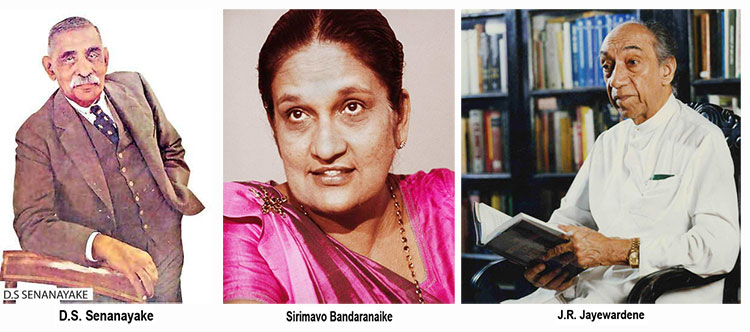
By Rohana R. Wasala
(Part one of this article appeared yesterday)
At independence, the British colonialists left a country that was able to flaunt relatively high economic indices due to volatile external factors associated with the end of World War II in 1945 (such as the increase in the price of rubber exports from Ceylon). A 1948 UN report described the Sri Lankan economy as agricultural and industrially underdeveloped; low productivity and unavailability of resources relative to the country’s population hampered its economic development. The people were socially and communally divided as a result of the imperial policy of ‘divide and rule’. A minuscule minority of citizens that emerged as an English speaking, Westernised and generally Christian elite was privileged over the rest of the downtrodden population. (Today some members of the same class are looking forward to a return to the good old days.) The vast majority of the people lived in grinding poverty then. The reality was a far cry from what (probably the majority of) today’s young people have been brainwashed to believe through propaganda, a pre-independence Utopia of sorts.
The seventy-five-year post-independence history of Sri Lanka is the record of one long national struggle conducted according to democratic norms from the very beginning for the historic goal of building a Sri Lankan nation that stands on its own feet as a single sovereign state that is second to none in the world. In my opinion, six iconic leaders gave leadership to this struggle, whose approaches were different, though the goal remained the same. Prime Minister D.S. Senanayake (1947-52) regarded all citizens as ‘Ceylonese’, not as Sinhalese, Tamils, Burghers, etc., who were at loggerheads with each other. He began his national service decades before independence. As minister for agriculture and lands in the State Council in the 1930s, he brought in legislation to bring bare lands into cultivation through irrigation schemes. Under his multipurpose Gal Oya Development project, 250,000 landless peasants were settled in uninhabited areas in the eastern province. Some communal-minded Tamil politicians objected to this to no avail. It was Senanayake who proposed the use of hydroelectricity, as Sri Lanka had no coal or gas for energy production. He was popular among ordinary people of all communities as well as among the British who were leaving. His unexpected death in 1952 removed his sound leadership. Like D.S. before him, S.W.R.D. Bandaranaike (1956-59) was elected at a parliamentary election to lead the nation as prime minister in 1956. He was a true nationalist like Senanayake. As such, he took steps to redress the harsh discrimination that the majority Sinhalese were subjected to under the colonial British. Communalist Tamil leaders vehemently opposed him. Tamil MPs opposed him even when he had the Prevention of Social Disabilities Act No. 21, 1957 passed. The particular act was meant as a check on caste discrimination, a social evil that was especially severe among their own community. (Some hooligans among the Aragalakarayas at Galle Face wanted to pull down the Bandaranaike statue there for obvious reasons.) It was his widow Sirimavo Bandaranaike (1961-65, 1970-77, 1994-2000) who was able to turn the Dominion of Ceylon into the fully independent Democratic Socialist Republic of Sri Lanka, which was the most profound system change that any post-independence leader ever achieved in the name of the Sri Lankan people (nation). She pioneered certain economic policies, that harked back to the D.S. Senanayake era of agricultural development just as well as they looked forward to a future of local industrial advancement. The austerity measures her government introduced were too much for the people. The opposition made use of the spreading public disaffection with her administration and the emergence of a streak of authoritarianism on her part in undemocratically prolonging the government’s term of office by two years. J.R. Jayewardene (1977-89), who was himself a staunch nationalist like his predecessors, had the second republican constitution promulgated by which he instituted the all-powerful executive presidency. The institution of the executive presidency has to date protected the unitary status of the Sri Lankan state. J.R. saw to it that it survived even the Indian imposed 13A, at least tenuously. He introduced the open market economy model for national development. He implemented the Accelerated Mahaweli Programme, the largest multipurpose development project ever undertaken in the history of the country. It was the fruition of a plan proposed by Sirima Bandaranaike as (the world’s first female) prime minister in 1961. Following J.R. Jayewardene, R. Premadasa (1989-93) made history as the first ‘commoner’ to become head of state of Sri Lanka. He got elected as president at a time when the country was literally being torn apart by civil strife by the JVP in the South and by the LTTE in the North. The JVP violently opposed the UNP government of JRJ for giving into Indian expansionist intervention in Sri Lanka). Premadasa himself, though prime minister under Jayewardene, had demonstrated his angry disapproval of the Indo-Lanka accord by absenting himself from the signing ceremony between JR and Rajiv Gandhi. Premadasa put an end to the JVP insurgency in1989 through ruthless violence. The LTTE was mounting terrorist attacks on civilian as well as military targets in pursuit of their dream of establishing a separate state on Sri Lankan territory. On becoming president, Premadasa flatly asked India at a public rally to withdraw the Indian Peace Keeping Force. He was determined to resolve the Tamil problem peacefully as an internal matter. He made peace overtures to the LTTE. He was said to have given arms to the LTTE to fight the IPKF. But finally, Premadasa was assassinated by an LTTE suicide bomber. Mahinda Rajapaksa was able to militarily defeat the LTTE terrorism through his political management skills. But he gravely mismanaged the aftermath through personal hybris as well as family bandyism. Even his nationalist credentials are in doubt now. But his past achievements cannot be forgotten.
The great nationalist achievements of the past seventy-five years, which belong to all the communities that make Sri Lanka their home, are a memorable part of the country’s history, whatever its future is going to be. This truth must be revealed to the global powers – the America-led West, India, and China – who have remained our friends throughout the last seventy-five years and helped us generously in their different ways in spite of their own conflicting national interests. Sri Lanka is indispensable for each of them because of its geostrategic location. The highly cultured peaceful Sri Lankans of diverse ethnicities have been living in peace and harmony for centuries. Disinformation by the few separatists and the handful of religious extremists who are exploiting the misplaced generosity of charitable international donors should not be allowed to prolong the suffering of these innocent people, who pose no threat to any of those powers. All Sri Lankans want the geostrategic location of their island to be a blessing for them, not a curse.
Opinion
Revisiting Humanism in Education: Insights from Tagore – II
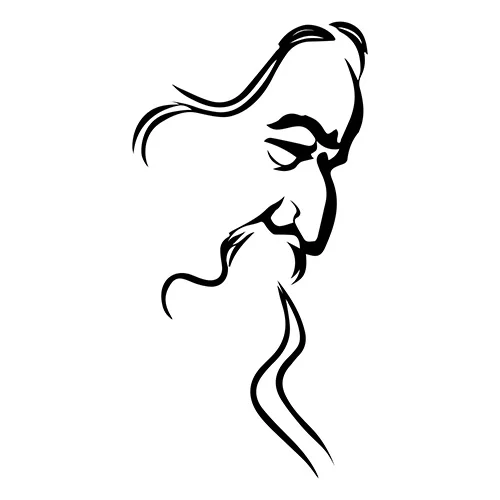
by Panduka Karunanayake
Professor in the Department of Clinical Medicine and former Director, Staff Development Centre,
University of Colombo
The 34th J.E. Jayasuriya Memorial Lecture
14 February 2025
SLFI Auditorium, Colombo
(Continued from 17 Feb.)
Tagore and humanism
Tagore was born to a wealthy Bengali family in British colonial India in the year 1861. This was a time of great social transformation in India, involving political, social, religious and literary movements. In his youth he saw the organisational structure that I described in its formative days, and immediately realised how it is unsuited for anything except the British colonial plans. In particular, he appreciated the strengths of traditional Indian education such as the gurukula, ashrama and tapovana systems, the value of the aesthetic sense to human growth and the role of the environment in our lives. He placed a huge importance on emotions and social values, and decried a materialistic or hedonistic approach to life. Always explaining his ideas through brilliant similes, he said: “The timber merchant may think that flowers and foliage are only frivolous decorations for a tree, but he will know to his cost that if these are eliminated, the timber follows them.”
But he also saw the value of the science and technology that the British were bringing in. He wasn’t a simplistic indigene fighting to chase the British out. He wanted to combine the good of both the old and the new, both India and the world. The best description that we can give of the man is call him a great harmoniser of ideas and an incorrigible optimist.
According to Subhransu Maitra, who is a well-known Indian intellectual who translates Bengali works into English, Tagore’s experimental journey on education lasted approximately fifty years, from the 1890s to the 1940s, and evolved through three phases. In the first phase, roughly from the 1890s to the 1910s, he thought of education as ‘freedom to learn,’ in contradistinction to the kind of straightjacketed rote-learning that British colonial education had introduced to India. He also fought for education in the mother tongue instead of English. This was the time Tagore set up the Brahmacharyashrama, a school for boys in Santiniketan. In the second phase, from the 1910s to the 1930s, he thought of education as ‘freedom from ignorance and want’ and as a powerful tool to emancipate humanity from poverty, superstition and suffering. This was the time when he set up the Visva-Bharati in Santiniketan, his version of a university, as well as Sriniketan, his effort at rural upliftment. And in the third phase, from the 1930s until his death in 1941, which was the time when Visva-Bharati was flourishing, he thought of education as an internationalist, humanist project or ‘freedom from bondage’, in contradistinction to nationalism. I will follow Tagore’s journey in this sequence, and at each stage try to highlight the lessons his educational philosophy gives us today.
But in toto, I feel that the common thread that runs through this journey is his commitment to humanistic education – a term that actually became popular only after his death, following the work of educational psychologists such as Abraham Maslow and Carl Rogers. So let me start by briefly explaining what humanistic education means.
Humanistic education is the application of the principles of humanism or humanistic philosophy to education. I am sure that many in this audience already know what humanism means, but bear with me when I try to explain it. I want to highlight the fact that humanism is not the same as some concepts with which it is often conflated – such as humanitarianism or humaneness or the humanities. In essence, humanism believes in the primacy of human agency, or the belief that humans are in charge of their own destinies; it is an Enlightenment idea that took agency away from divinity and placed it in the hands of the human being. (But of course, it is also very much part of some ancient philosophies.) But it identifies this agency as a responsibility both to oneself and one’s society, rather than as a libertarian licence. The ideal of humanism is human flourishing – not hedonism, nor any goal in the afterlife.
In humanism, human beings are considered independent, inherently good and capable of positive growth. One might look at these assumptions somewhat cynically – but it is hard to deny these qualities to a newborn child who has arrived on this world in all its innocence. As Tagore once famously said, “Every child comes with the message that God is not yet discouraged of man.”
As Ratna Navaratnam (1958) wrote in New Frontiers in East-West Philosophies of Education:
“Humanism takes as its dominant pattern the progress of the individual from helpless infancy to self-governing maturity…The child is put at the centre of the picture and the educator judges the truth of any theory and the success of any system, by the contribution it makes to the transformation of creative childhood into creative manhood.”
In humanistic education, several features can be identified:
* The student is given a free choice to decide what to study, how and for how long, within reason. As a result, the motivation to learn is intrinsic, rather than extrinsic goals such as exams, grades or certificates.
* The educational experience is left open, exploratory and self-driven. There is little or no emphasis on a curriculum, syllabus or what we today call ‘intended learning outcomes’.
* The setting for learning is safe. What the teacher does is provide the student with the resources to quench curiosity and play a supportive and facilitatory role, as a resource person and guide. There is no coercion, judgement, criticism or corporeal punishment.
* The learning environment focuses on both cognitive and emotional aspects of the learning experience; in other words, both ‘knowing’ and ‘feeling’ are considered valid and important to the learning process.
* And finally, at least a significant portion of the learning time is spent in contact with nature and the environment, rather than inside a classroom.
With that background, let me now turn to the three phases in Tagore’s journey in education.
Phase 1: ‘Freedom to learn’
Tagore was urged to experiment with education because he saw the unsatisfactory nature of schools, which he described as “…educational factories, lifeless, colourless, dissociated from the context of the universe, within bare white walls, staring like eyeballs of the dead…It provided information and knowledge for the intellectual growth and it neglected the aspects of human growth.”
Let me quote Tagore at length:
“The way we understand it, the word school means an education factory or mill of which the schoolmaster is a part. The bell goes off at half past ten and the mill begins to work. As the mill starts, the master also keeps spouting off. The mill closes at four o’clock. The master too, stops spouting and the students return home, their heads stuffed with factory-made lessons. Later, at the time of examinations, these lessons are evaluated and stamped.
“The advantage of factory production is that the products are exactly made to a standard and the products of different factories differ but little from one another. So, it is easy to grade them. But individuals differ a great deal from one another. Even an individual may not be the same from one day to the next.
“Even so, a man cannot get from machines what he gets from another man. A machine produces, it can’t give. It can supply oil, but it can’t light a lamp.”
Tagore’s journey was dedicated to find a suitable alternative to such factory-style education
You can see that he disliked uniformity and intellectual dominance in education, and he preferred freedom to do, experience, feel and learn. This is especially noteworthy today, because educational psychologists have since found the importance of the affective domain for learning: the so-called cognitive-emotional model of learning.
Importantly, the reason he liked a more active style of learning is not merely because it is better for assimilation or long-term memory – as we are accustomed to think today – but because it promoted the growth of individual talents and tastes and imparted a communitarian rather than an individualistic outlook to life.
He also preferred a more idyllic, rural setting to educate children, because he felt that cities and towns rob the students of their bonding with nature, which was necessary for the growing mind to grow freely, wholistically and strongly. This also included creating opportunities for social contact with the rural folk, and trying to help the villagers at least in small ways. So he was especially keen that school and society were welded together. That was his way of teaching two things: first, communication skills, and second, a sense of social service. It would be interesting to compare this to a similar local experiment: Dr C.W.W. Kannangara’s Handessa rural education scheme. (For an excellent account, see Gunasekara [2013].)
To Tagore, the school-society link was also necessary to impart moral virtues: “It is utterly futile to expect that the preaching of a few textbook precepts…at school will set right everything when countless varieties of dishonesty and perversity are destroying decency and taste every moment in today’s artificial life. This only results in different kinds of hypocrisy and insolent flippancy in the name of morality…”
All around us today, we can see how textbook-based teaching of virtues has led to hypocrisy among those who do wrong with impunity, flippancy among those who allow wrong to happen as if it is the norm, and cynicism among those who try to reconcile what they see with what they were taught in classrooms.
I am sure you will appreciate that some of Tagore’s humanistic ideas are being put into practice in pre-school and primary education even today, for instance following the teachings of Maria Montessori. In Sri Lanka, however, because of the bottleneck effect of exams, they are being throttled by the competitiveness and the rush to obtain certificates. This has enormous implications to our own education system. What Tagore taught us – by not judging learning through exams – is that if we had exams, much of what we expect students to learn would be ignored because they are not specifically assessed in the exams. The reason we want exams is because we want to compare student with student. But how can we compare student with student if each student is a unique person? What do we value greater: the comparison or the uniqueness? We must be careful when answering this question, because often it turns out that our answer is actually not that of the educationist but that of the industrialist, and not that of our society’s but that of the countries in the core of knowledge production.
Phase 2: ‘Freedom from ignorance and want’
This is perhaps the phase of his work that is hardest to pin down to a few fundamentals. But I will try.
To me, it appears that his first lesson is to tailor education to our own needs, rather than to import and transplant an educational system from elsewhere. (Tagore himself was, of course, warning about the dangers of blindly following the British system.) This is an excellent testament for what we today call contextual knowledge or conditional knowledge.
Looking around, I cannot help feel that this is such an important lesson for us too. I wish that as educationists we paid more attention to this. We cannot do so if we merely ask our teachers to do what international experts advise. We must study our own society, our own past practices and experiments, how they have succeeded or failed and why, what would work for us now and so on. Tagore said:
“Only when we are able to channel the current of education in our country through the numerous experiments of numerous teachers, it will become a natural thing of the country. Only then will we come across real teachers here and there, now and then. Only then a tradition, a succession of teachers will naturally follow. We cannot invent a particular educational system by labelling it as ‘national’. We can call ‘national’ only education of that kind which is being conducted in a variety of ways through a variety of endeavours by a variety of our countrymen…When a particular education system seeks to fasten a static ideal on to the country, we cannot call it ‘national’. It is communal and therefore, fatal to the country.”
To me, such a uniform education system is worse than communal – at best it would facilitate pedantry, at worst it could even facilitate totalitarianism and fascism.
Importantly, Tagore was keen to point out that when times change, the same energy needs to be spent on amending our systems and practices. In one speech he used a beautiful simile: he likened time to a river, and said that people who don’t change with changing times are like the people who would not change the position of the ferry even after the river has changed its position. He asked, How can they cross the river from the old ferry? This would be great advice for a country that still runs its educational system dictated to by policies that are over eighty years old.
The next crucial lesson is his trust in science and technology – but only appropriate technology – as well as his disdain for outdated traditions, superstitions and rituals. In this sense, he was remarkably modern. He said:
“When in the East we were busy calling upon the ghostbuster in case of disease, the astrologer to placate hostile planets in case of trouble, worshiping the goddess Sitala to ward off smallpox and similar epidemics, and practising home-grown black magic to get rid of enemies, in the West a woman asked Voltaire: ‘I have heard one can kill whole flocks of sheep by chanting a mantra?’ Voltaire replied: ‘It can certainly be done, but an adequate supply of arsenic along with it is also required.’ It cannot be absolutely ruled out that a modicum of faith in magic and the supernatural still persists in isolated pockets in Europe, but a trust in the efficacy of arsenic in this connection is almost universal there. That is why they can kill us whenever they want to and we are liable to die even when we do not want to.”
Tagore was wise enough to note that the British colonial government was actually quite keen to deny Indians this gift of science and technology. He pointed out that the colonial colleges and universities actually functioned with many constraints and limitations imposed by the colonial government. One of the main hopes that Tagore had in establishing Visva-Bharati was overcoming this. He knew that foreigners, both western and eastern, yearn to come to India to learn about her strong and vibrant achievements in the humanities. He welcomed them. In return, he also created space for Indians to come there and learn what the West had to teach – which, of course, was mainly science. This was the confluence of East and West that Tagore envisaged for Visva-Bharati. And I think that one
of the reasons why Visva-Bharati failed later on was that after Independence, India had an alternative, perhaps better way to forge ahead with science, when Jawaharlal Nehru set up the Indian Institutes of Technology. But I wonder whether Tagore’s plan in combining the strength in our humanities with the strength in science and technology of other lands within our educational system could still serve us here.
Tagore also created Sriniketan and its Institute of Rural Reconstruction, a rural upliftment
programme using what would later come to be called ‘appropriate technology’. This was not a
blind exercise in importing European machines and gadgets like washing machines or floor polishers. Instead, it was an attempt to solve the problems faced by the rural folk by the use of scientific knowledge and appropriate technological tools. It included components such as rural education, village sanitation, roving dispensaries, anti-malaria and child welfare schemes, cooperative societies, scientific
agriculture, experimental farming, dairy farming, weaving, tannery, smithy, carpentry and other
projects. It was designed to promote selfconfidence and self-help and eliminate ignorance and superstition among the villagers. As Tagore described his educational mission:
“Our centre of culture should not only be the centre of intellectual life of India, but the centre of her economic life as well. It must cultivate land, breed cattle, to feed itself and its students; it
must produce all necessaries, devising the best means and using the best materials, calling science to its aid. Its very success would depend on the success of its industrial ventures carried out on the co-operative principle; which will unite the teachers and students in a living and active bond of necessity. This will also give us a practical, industrial training, whose motive is not profit.”
When the time came for Tagore to send his son Rathindranath for higher education, he sent him not to Oxford but to learn agricultural science at Illinois: “Indians should learn to become better farmers in Illinois than better ‘gentlemen’ in Oxford”. Similarly, he sent the children of his relatives and friends, including his son-in-law, to learn other skills, such as scientific dairykeeping, the cooperative movement and rural medical systems.
We can see that Tagore’s educational philosophy was not merely bookish but also practical, not merely ideological but also pragmatic, not merely effective but also of quality, and not merely focused on the individual but also on uplifting the community. We can see that it was not pedantic but contextual, not blind but appropriate, and not profit-oriented but promoting human flourishing.
(To be concluded)
Opinion
British PM Starmer’s vain attempt to defend Reeves
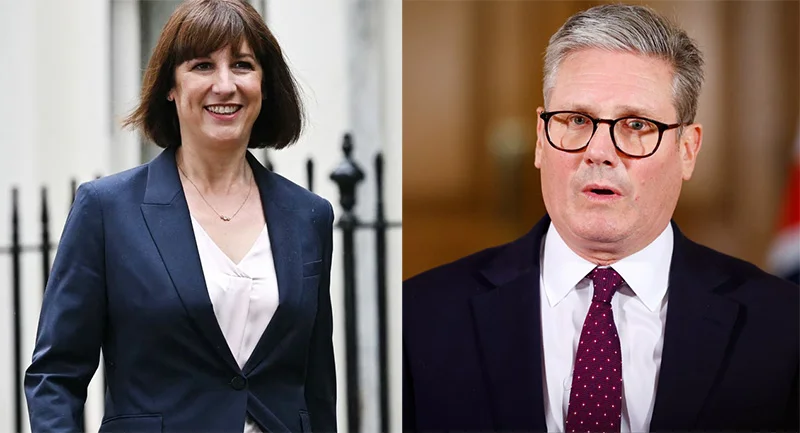
British Chancellor of the Exchequer Rachel Reeves’ tax-hiking budget prompted criticism from businesses and farmers, and despite Labour pledging to boost the economy at the centre of its plans, growth has been sluggish. Now the chancellor is facing questions about whether she exaggerated her experience on her online CV and her use of expenses while working in the banking sector before she became an MP.
Her career at HBOS has come under scrutiny, after the BBC revealed that Reeves and two colleagues were the subject of an expenses probe while she was a senior manager at the bank. The initial stage of the HBOS investigation found that a whistleblower’s complaint was substantiated, and the three employees appeared to have broken the rules, according to a senior source with direct knowledge of the probe. The BBC has not been able to establish what the final outcome of the investigation was and it might not have concluded.
A spokesman for Reeves said the chancellor had no knowledge of the investigation, always complied with expenses rules and left the bank on good terms. A spokesman for Reeves said the chancellor had no knowledge of the investigation, always complied with expenses rules and left the bank on good terms. A spokesman for Reeves confirmed that dates on her LinkedIn were inaccurate and blamed an administrative error by the team.
Last year, her LinkedIn profile was also changed to describe her role at HBOS as “Retail Banking”. It had previously claimed she worked as an economist at the bank, but she instead held a management role in the bank’s customer relations department, which dealt with complaints. Entering Parliament in 2010, an early mentor on economic policy was Alistair Darling – the last Labour chancellor, during the financial crisis.
She quickly rose up the party’s ranks, shadowing roles at the Treasury, Work and Pensions, and the Cabinet Office.
Throughout Jeremy Corbyn’s four and a half years as Labour leader, she remained on the backbenches because she felt she could not endorse his policies. Called a “Red Tory” by some in the party, she described this as a “very unpleasant period” in an interview with the BBC’s Nick Robinson.
In October 2023, she admitted she “should have done better” after it emerged some passages in her book, The Women Who Made Modern Economics, had been lifted from other sources without acknowledgment. She told the BBC some sentences “were not properly referenced” and this would be corrected in future reprints.
Last July, Reeves became the country’s first female chancellor and quickly faced what she described as “tough choices”.
She claimed a “black hole” in the nation’s finances meant winter fuel payments would have to be cut for millions of pensioners and National Insurance hiked for employers.
Despite Labour’s attempts to win over businesses during the election campaign, many were disappointed they bore the brunt of the £40bn in tax rises announced in her first Budget. Before winning power, Reeves promised she would govern with “iron discipline” and bring stability to the public finances, leading to comparisons with Conservative “Iron Chancellor” Margaret Thatcher.
On Friday, Reeves was asked about the expenses claims directly. She said: “No-one ever raised any concerns about my expenses when I worked for Halifax Bank of Scotland.” She said her expenses had been “signed off in the proper way” and “no issues were ever raised” during her time at the bank.
Her expenses were signed off by her manager, who was also one of the three employees who were the subject of the expenses probe. Reeves left the bank in May 2009, as did her boss. The other senior manager was on sick leave in May and never returned to work at the bank. There is no suggestion any of the departures were linked to the investigation or spending issues and a spokesman for Reeves said the chancellor left the bank on good terms. Reeves has accepted the findings of another part of our investigation, this time over her CV. We established that the chancellor had exaggerated the length of time she worked at the Bank of England. The BBC News investigation revealed that concerns were raised about Reeves’s expenses while working at HBOS between 2006 and 2009. A detailed six-page whistleblowing complaint was submitted, with dozens of pages of supporting documents including emails, receipts and memos.
The complaint led to an internal investigation by the bank’s risk department.
This was passed to internal audit, which reviewed the allegations and concluded that they were substantiated and there appeared to be evidence of wrongdoing by Reeves and her two colleagues, according to a senior source with direct knowledge of the investigation. What we have not been able to establish is what happened next and whether the bank ever reached a formal conclusion.
On Friday, Science Secretary Peter Kyle told BBC Radio 4’s Today programme that the reporting was “inaccurate”.
Both he and Siobhain McDonagh, a Labour MP who appeared on BBC’s Politics Live on Thursday, raised comments by a former HR manager, Jane Wayper – which, they said, disproved the BBC News’s story.
Wayper spoke to the BBC after being given permission to do so by Reeves’s team.
She provided an on-the-record statement which said she “would have been made aware of any investigation which concluded there was a case to answer” on the basis that she “would have been required to organise and oversee a disciplinary process”. However, the BBC has not reported that the case reached a formal conclusion, or that there was disciplinary action. Kyle incorrectly claimed that the quote had not been included in our report – but it had been in the article since it was first published on Thursday morning. He also incorrectly referred to Wayper as the head of HR at the bank. In reality she was an HR business partner working in the department where Reeves worked. On Friday, Reeves was asked about the expenses claims directly. She said: “No-one ever raised any concerns about my expenses when I worked for Halifax Bank of Scotland.” She said her expenses had been “signed off in the proper way” and “no issues were ever raised” during her time at the bank. Her expenses were signed off by her manager, who was also one of the three employees who were the subject of the expenses probe. Reeves left the bank in May 2009, as did her boss. The other senior manager was on sick leave in May and never returned to work at the bank. There is no suggestion any of the departures were linked to the investigation or spending issues and a spokesman for Reeves said the chancellor left the bank on good terms. We established that the chancellor had exaggerated the length of time she worked at the Bank of England. Reeves has often said she spent the “best part of a decade” working at the bank when setting out her credentials to run the economy to voters.
However, her LinkedIn profile said she only worked there for six years – from September 2000 to December 2006. A year of that time was spent studying at the London School of Economics (LSE).
The BBC has now established that Reeves left the Bank of England in March 2006, meaning the time she spent working there amounts to five and a half years. A spokesman for Reeves confirmed that dates on her LinkedIn were inaccurate and said it was due to an administrative error by the team. Her profile on the social media site has since been updated.
Shame on both the Prime Minister & the Chancellor!!
Sunil Dharmabandhu
Wales, UK
Opinion
Wasting time at channelling centres: A call for change
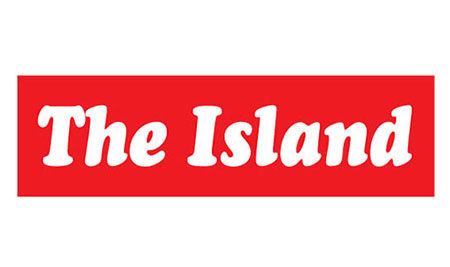
Visiting a channelling centre should be a straightforward process—book an appointment, arrive on time, see the doctor, and leave with a treatment plan. Unfortunately, the reality is far from this ideal, as I recently experienced firsthand.
I accompanied a friend of mine who had an appointment with a specialist at a well-known channelling centre (CC). The doctor was scheduled to begin consultations at 6:30 AM, and his appointment was number seven (7), with an assigned time of 6:35 AM. Simple calculations revealed that the doctor would have had to examine six patients in just five minutes—a timeline that seemed neither practical nor fair to those in need of thorough medical attention. Wanting to be considerate, we estimated that at least five minutes should be spent per patient and arrived at the centre at 7:00 AM. To our disappointment, we were informed by the receptionist that the doctor had not yet arrived.
By that time, around twenty people were waiting, ten of whom were visibly unwell and could have been patients. A particularly frustrated patient mentioned that on his previous visit, the same doctor had arrived two hours late. Upon further inquiry, I discovered that the doctor, scheduled to start his consultations at 6:30 AM, was in fact performing surgical operations at another hospital at that time. If such commitments were known in advance, why was his channelling session scheduled for an impossible hour? Why does the channelling centre assign specific times that have no relation to actual consultation times?
This issue is not confined to a single doctor or one particular CC—it is a systemic problem that affects countless patients nationwide. The lack of proper scheduling and coordination leads to unnecessary delays, causing immense distress to those who are already suffering.
Moreover, the infrastructure at these centres is equally inadequate. Parking facilities are either non-existent or located far from the premises, while doctors enjoy reserved spots. The irony is that the very people who need the service—the patients—are left in discomfort and frustration.
This situation demands urgent attention. Channelling centres, doctors and the Ministry of Health must work together to create a more humane and efficient system that respects patients’ time and well-being. Simple adjustments, such as realistic scheduling, improved communication, and better patient facilities, could make a world of difference.
After all, roles are interchangeable—today’s doctor might be tomorrow’s patient. It is time to rethink and reform the system to benefit all involved.
I would say these small but essential changes too would lead to a “Lassana Lanka”.
D R
-
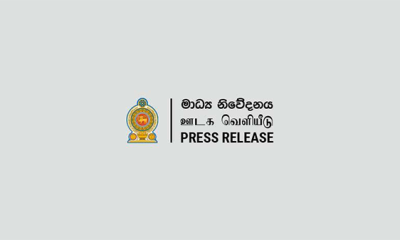
 News7 days ago
News7 days agoOracle Corporation pledges support for Sri Lanka’s digitalization
-

 Sports4 days ago
Sports4 days agoRemarkable turnaround for Sri Lanka’s ODI team
-

 Editorial7 days ago
Editorial7 days agoGroping in the dark
-

 Opinion7 days ago
Opinion7 days agoThe passing of Sarjana Karunakaran
-
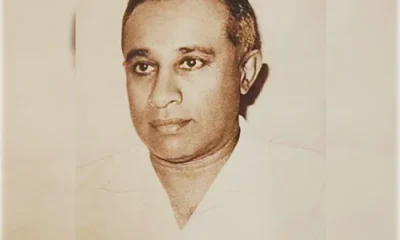
 Opinion7 days ago
Opinion7 days agoShortage of medicines: Senaka Bibile Policy is the solution
-
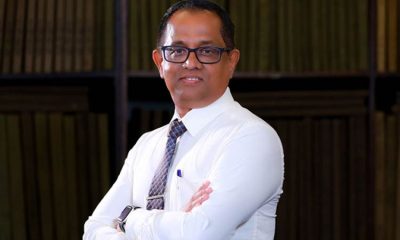
 News5 days ago
News5 days agoSpeaker agrees to probe allegations of ‘unethical funding’ by USAID
-
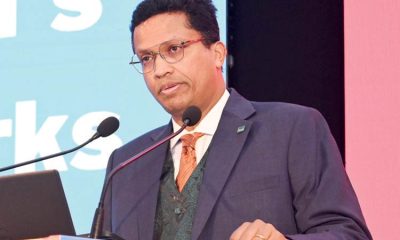
 Business4 days ago
Business4 days agoUN Global Compact Network Sri Lanka: Empowering Businesses to Lead Sustainability in 2025 & Beyond
-
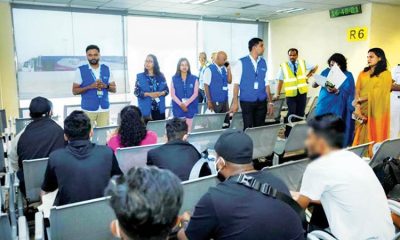
 Features4 days ago
Features4 days agoScammed and Stranded: The Dark Side of Sri Lanka’s Migration Industry


